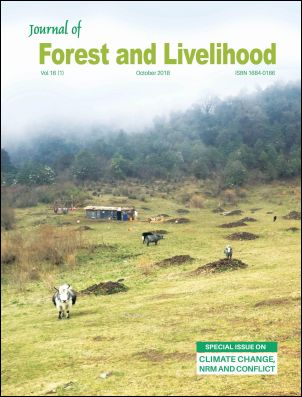Breaking the Bottleneck: Conflicts Metamorphosis of Chure Landscape Management in Federal Nepal
DOI:
https://doi.org/10.3126/jfl.v16i1.22883Keywords:
Chure management, conflict, conflict management, federal structure, local governmentAbstract
Chure forests, which is one of the youngest and most fragile landscapes of Nepal, continue to be degraded due to resource exploitation and conflict over its management. This region is considered to be the lifeline to down-stream communities - mainly for water - while inhabiting millions of poor and rural people that depend on natural resources - especially forests commons. Government initiatives to manage Chure have escalated contestations in the recent years. Its decision to declare Chure landscape as ‘Environmental Protection Area’ manifests a protection-centric management approach. This research scrutinises the genesis of contestation on Chure management utilising three–elements of conflicts described by Brown et al. (2017). It analyses power–relation to demonstrate potential implications on Chure landscape management as well as conflict resolution options, in the changed political context of federal Nepal. Our research reveals that all stakeholders are well aware of the continuous degradation of Chure landscape and have agreed on discovering the common locus of sustainable management. However, the state-community contestation still persists due to divergent understandings of degradation. Despite multiple strands of management options, contextualised community-based approach still appears to be an appropriate option to solve this persistent contestation, building on the practices of community forestry and historic failures of top-down, protection-centric management practice. The newly elected provincial and local governments could further facilitate a more effective management of Chure landscape through resolving the contentious state-community conflict.
Downloads
Downloads
Published
How to Cite
Issue
Section
License
CC-BY-NC: This license allows reusers to distribute, remix, adapt, and build upon the material in any medium or format for noncommercial purposes only, and only so long as attribution is given to the creator.





